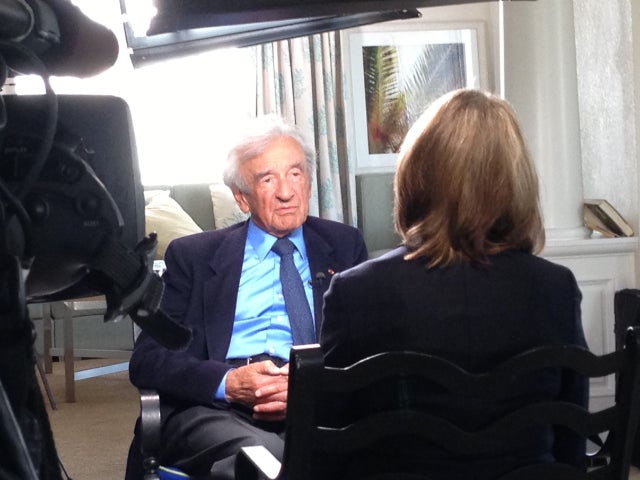The U.S. Holocaust Memorial Museum at 20
(CBS News) "Never forget" is a phrase often associated with the Holocaust. It's also the guiding principle of a museum Rita Braver has been to visit:
Shoes that might have been danced in once upon a time, now lifeless and misshapen . . . intimate family portraits taken in a Lithuanian village, that was later annihilated.
These are just some of the mementos from one of the darkest moments in human history, items that are unflinchingly displayed at the U.S. Holocaust Memorial Museum in Washington.
Since opening in 1993, the museum has had about 35 million visitors from all over the world.
They come, says museum director Sara Bloomfield, to a building deliberately designed to create a feeling of discomfort.
Bloomfield told Braver that the building's architect sends cues to people entering the building that "you're in a different world, like he would say, a world turned upside down."
It was President Jimmy Carter who in 1978 envisioned a monument to commemorate the Holocaust. But when he asked writer Elie Wiesel to be in charge, the Nobel Prize winner and Holocaust survivor suggested a museum -- a place where people would go and learn something.
"Not only that, some place where they would come and they would realize how much they don't know," Wiesel said.
At the official opening ceremony President Bill Clinton set forth the museum's purpose: "To deepen our memories and our humanity, and to transmit these lessons from generation to generation."
Twenty years later, that mission is still being fulfilled, with visitors trying to fathom the Nazis' coldly-calculated murder of an estimated 12 million human beings.
Among the exhibits: One of the actual cattle cars that transported Jews and others deemed "undesirable" by the Nazis to forced labor camps and gas chambers.
"So many children," Wiesel said to Braver. "I now see the pictures of the children. Why the children? My God, why the children?"
Elie Wiesel was just 16 -- barely past childhood himself -- when he was liberated from the concentration camp at Buchenwald in 1945. It took him years to write about what he witnessed.
"There are no words," Wiesel said. "In truth, the enemy managed to push his crimes beyond language. Who could really describe what it meant, standing in line to the gas chambers? Who can? I was afraid I would not find the words. And I still am not sure whether I found them."
But the museum has provided an outlet for many who lost so much.
In commemoration of the museum's 20th anniversary, there have been events across the country to honor World War II vets and survivors, a generation that is fast disappearing.
Eva Vonancken, who lost most of her family in the Holocaust, is donating a piece of her own history to the museum: A stuffed bunny that camp prisoners managed to piece together for her.
"And it's now 70 years old and decaying. And although my children are aware, their children won't be, so eventually it would've disappeared. So I thought it was a better place."
In fact, to safeguard such artifacts, the museum has opened a collection and conservation center. Braver's was the first TV camera crew allowed to shoot there.
There are about 16,000 objects preserved there, according to curator Steve Luckert. "We have everything from concentration camp uniforms that were worn by victims, to the badges that they wore in camps, to trunks that they took when they tried to flee Germany," he told Braver.
And that doesn't include the million pages of original documents.
Luckert showed Braver an album that contains one of the few known photos of Josef Mengele, the notorious physician who conducted brutal medical experiments on prisoners.
"Even though there were people looking for him, he escaped justice, so he never paid for his crimes," said Luckert.
But today, the United States Holocaust Memorial Museum stands as a reminder of what can still happen when evil goes unchecked.
Wiesel said the contents of the museum are, in a strange way, the last gift of the dead to the living: "We leave you our story, and now it's up to you to do something with it in order to save mankind.'"
For more info:
- United States Holocaust Memorial Museum, Washington, D.C.
- Elie Wiesel Foundation for Humanity, New York, N.Y.

